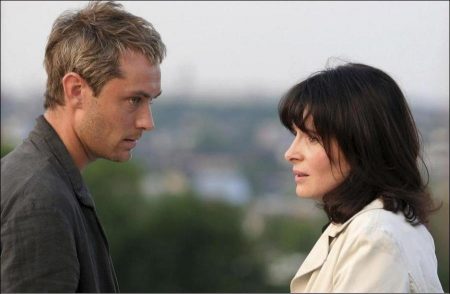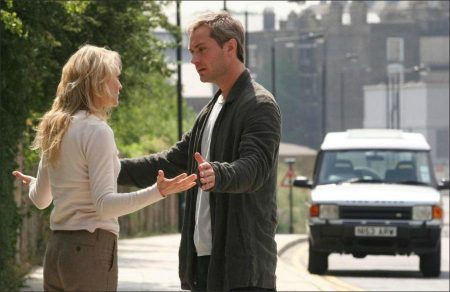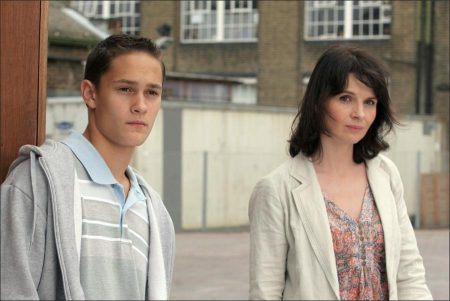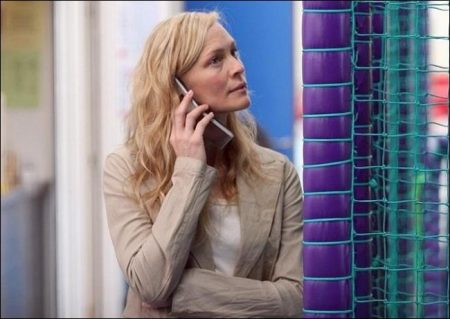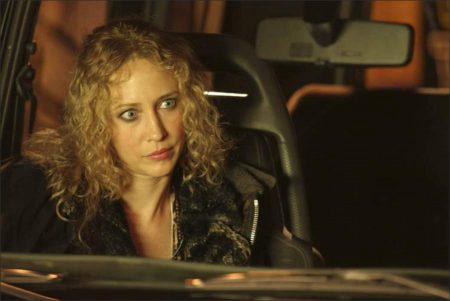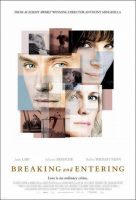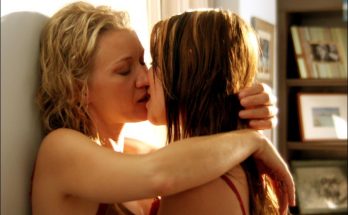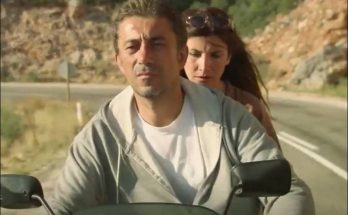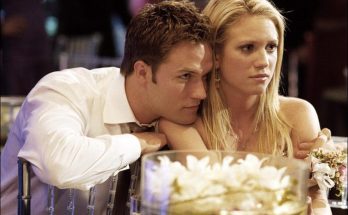Who is cleaning my house? Who is cooking my food? Who is washing my car?
Breaking and Entering Movie Trailer. For his first original script to be produced since ‘Truly, Madly, Deeply’ in 1991, Anthony Minghella chose a drama, both intimate and wide-ranging, involving the disparate lives of contemporary Londoners. His characters represent a cross-section of residents, from established young professionals to the city’s more recent arrivals: immigrants carrying burdens of war and economic hardship.
As the rundown neighbourhoods are redeveloped and the ‘haves’ encroach on the terrain of the ‘have-nots,’ boundaries of class, culture and privilege are blurred and breeched. The players are brought together by a series of actual and metaphorical thefts, which force them to connect, fall apart and come together again in other, better ways.
“A long time ago, I tried to write a play called Breaking and entering,” says Minghella. “The idea was that a couple comes home from a party to discover that their house has been burgled. When they do an inventory of what has been taken, they discover that things have been added and these things indicate problems in their marriage. I liked this idea but I could never write it, although I kept trying.
Then, a couple of years ago, we bought an old chapel in North London to use as our studio. I remember my son Max saying ominously at the time and it’s in the film, ‘Bad place for an office.’ He was at school nearby and knew the area. But I loved the place, loved the location. During the very extensive renovation, I was in Romania scouting for ‘Cold Mountain’ and I’d get these calls from the office saying, ‘Hello, we’ve had a break-in. Hello, we’ve had another break-in.’ I suppose the office had become point for the surrounding estates and it was a fun thing to come in and cause problems.
This sort of ‘baptism of burglary’ reminded me of the idea I’d had 15 years earlier and I started to think there was a different way to say the same thing: that a crime can cause a repair, a break can fix something. In my mind, there’s something in the idea that when damage is done, the repairing of that damage makes everybody stronger. There’s also this idea of the different ways there are to ‘steal’ things from other people; there are all kinds of theft. That’s partly what the film is about.”
Jude Law who plays the pivotal character, Will Francis, says, “It’s a story about the worlds we live in, here in London, that collide and pass by each other, and intertwine. Worlds that we sometimes don’t pay attention to that we take for granted, that we judge or – even worse – which we’re respectful to in a very patronizing way. You think, ‘I donate money to a charity, I give my old clothes to Humana, I’m doing my thing,’ whereas in fact, you’re doing nothing to help anybody who you see as anything beyond a belly. We almost never ask, ‘Who is cleaning my house? Who is cooking my food? Who is washing my car? Are they better educated than me?’”
“It’s not a sellable subject somehow, immigrants,” says Juliette Binoche who plays Amira, the Bosnian refugee mother of Miro, the boy whose breaking and entering sets off a series of unlikely encounters. “We kind of put them in the corner and we don’t want to think or talk too much about them. But I loved that Anthony wanted to address what it is to be an immigrant, how your life can change completely because of a war, because of other people’s decisions. How do you survive as an immigrant if, in your own country, you were a pianist, or a scientist, or a teacher, and then suddenly in another country you become a tailor, a cleaning lady?”
“It’s so easy to judge, isn’t it, when you don’t know people and you don’t know situations?” says Martin Freeman who plays Will’s business partner, Sandy Hoffman. “We all do it. I do it all the time. Sometimes you forget that everyone’s got a story, everyone’s got a life. It’s harder to be black and white once you know the more complicated things at stake in other people’s lives.”
“I wanted to make a film at home in London, and about London,” says Anthony Minghella. “And one of the things I love about London, which all of us who live here celebrate, or most of us do, is the fact that it’s full of people from many nations. It’s culturally so diverse; it really is a melting pot. But I would say that’s the charming analysis. The less charming analysis is that, as the striations of class have altered and blurred, everybody has sort of flocked to the middle-class in an interesting migration that has more or less removed English blue-collar workers. An invisible class has emerged: an underclass, most of who are not English at all but have come from other countries. Although we are extremely brittle and arch about immigration, and often use the issues as a political gesture in elections, we rely on immigrants.”
“My grandmother was a Polish immigrant; she had a Polish accent when she was speaking in French and she was a tailor. So for me, when I read the script, I was taken aback because I didn’t expect it to be so close somehow,” says Binoche. “So far, but so close at the same time. One of the reasons I wanted to do the film is as a dedication to her, my roots. I felt it was a great opportunity to say thank you because it’s still true that there are generations that have to go through a difficult time in order for their descendants to have a better life, better choices. It was wonderful to be able to talk about those people.”
Welcome to London King’s Cross
The changing demography of London is echoed in its changing geography. Significantly, the central character in Breaking and entering is a landscape architect with a comfortable home in leafy North London and a state-of-the-art studio in King’s Cross. The area has previously featured in the classic Ealing comedy “The Lady-killers” and Harry Potter fans know it as the location of the platform from which the Hogwarts Express departs. A vast repository of knowledge and culture, the British Library, is up the road. However, like most neighbourhoods around major train stations throughout the world, King’s Cross has its darker, seedier side.
During the 19th century, King’s Cross was the poorest district in London and it has been a red light district for decades. In recent times, in addition to millions of commuters bound for the Euston, King’s Cross and St Pancras mainline rail and underground stations, the area has been the haunt of transients bent on doing just about anything but catching a train. In the past five years, King’s Cross has also become the location of one of Europe’s largest building sites, the most ambitious urban redevelopment project in Britain since Victorian times.
“The film is set in North London where Anthony, Jude and I live,” says producer Tim Bricknell. “We’ve tried to depict the London of our daily lives which fluctuates between council estates – often very misfortunately designed housing projects that are just hideous to be in and live in – and very plush Victorian and Georgian areas of London. We were extremely fortunate to gain access to the King’s Cross construction site because in many ways, it’s a metaphor for the whole film. It’s about old London changing into new London, an old, stale life transformed by new influences from beyond the British pool.”
King’s Cross is currently in the throes of what Minghella describes as “an architectural convulsion.” In addition to the spectacular feat of engineering culminating in the new London terminus of the Channel Tunnel Rail Link (CTRL) scheduled to open in 2007, the King’s Cross regeneration project will continue for the next five to seven years. It will ultimately encompass new housing, businesses, offices and roads over an area of nearly 60 acres. Not everyone recognizes the benefits or shares the enthusiasm of government and business for this magnificent example of urban renewal.
“There’s a kind of irony in the way that we live,” says Minghella. “There’s an irony in some guy coming in and buying a smart office and then getting annoyed when people resent it. But of course they resent it if it’s in a place where opportunities are diminished.”
Ray Winstone who plays police detective Bruno Fella is a native of Hackney in the rough-and-tumble East End of London and has direct experience of the displacement of low-income families through ‘regeneration.’ He also recognizes the resentment often engendered by seeming progress. “You’re left with pockets of people that have always lived there and they get the hump because they’re building these beautiful things but it’s not for them,” he says “They get shipped off somewhere and people who can afford to live there move in.
I believe that the planners set out with the greatest intentions in the world but there’s never much thought for the people that have a real history of living there. As my character says to Jude’s, ‘There’s the British library over there, there’s King’s Cross, there’s you, and in the middle is crack village. And you wonder why you get broken into.’ No one ever thinks about that when they move into a place. People bring a lot of money into an area where there are other people that have no money and they wonder why their cars get robbed. I’m not saying it’s right, but there’s a reason why.”
“The King’s Cross development is all about the next level of what’s happening in all big cities but, to some extent, that it’s happening in a place like London that has such an incredibly rich history is not all good,” says Production Designer Alex McDowell. “The fact that King’s Cross is being cleaned up and mollified in a spirit of regeneration and improvement is not necessarily any kind of improvement socially and that’s a good part of what the story’s about.”
“London is a complicated city,” says Minghella. “Because I didn’t want to do a pretty London but I wanted to do a London full of colour, saturation, and complexity, I brought Benoit Delhomme on board. He’s brilliant at that. He shot Tran Anh Hung’s ‘Cyclo’ in Vietnam. Saigon is not always pretty, and he managed to give it real depth, and texture.”
Although the production filmed a variety of scenes on the building site at King’s Cross, renewal of the area has advanced so rapidly that another location needed to be found for Will and Sandy’s Green Effect studio. No suitable backdrop of mean streets and derelict buildings can now be found in the immediate area.
Green Effect
“One of the real issues was finding a setting for the Green Effect offices,” says McDowell. “Narratively, it had to be in King’s Cross but there were constraints about it being in a rundown, seedy part of King’s Cross that doesn’t really exist anymore. We’re now five or ten years past that reality. So the challenge was to find a location that could be pinned geographically to King’s Cross yet was far enough away that it was still in the unreconstructed state of an earlier part of London.”
McDowell and locations manager Jonah Coombes followed the thread of London’s little-used, little known canal system on the theory that the waterway would provide a link and a common ‘look’ between King’s Cross and wherever they eventually found an appropriate space. “The screen time was the longest in the Green Effect office but because it had so many specific narrative requirements – it had to be attacked from above, the freerunners had to come through the roof, it had to play for a certain size of architectural practice – we thought we’d be lucky to find even a skeleton of a building.”
After looking at 30 or 40 buildings along the canal heading eastward from King’s Cross, the team came upon their skeleton in the form of an abandoned iron foundry in Bow in London’s East End. The foundry was in such a dilapidated state that it had to be rebuilt from top to bottom, using real construction techniques rather than the cosmetic sleight-of-hand more commonly found on a film set. To the delight of the owner, walls were sandblasted, floors were laid, windows were replaced and steel was used to build interior bridges.
“There wasn’t really any alternative,” says McDowell. “With the restrictions of the budget and the geographical requirements of the location, we had to find a real place and make it our own. In almost every case, that’s what we did – we went into locations and modified them just enough to allow the arc of the story to move smoothly between them but we allowed the location to alter what we did rather than trying to impose our vision on it.”
“I’m so thrilled at what the art department can do,” says Minghella. “Alex would have been a great designer for Kubrick or somebody who would fret over a lampshade. The level of production design expertise in the film world is extraordinary. If directors were half as talented and rigorous as production designers are, there’d be a lot of great films out there.”
In Breaking and entering, Will Francis’s firm, Green Effect, has been hired to plan and design the open public spaces within the new development at King’s Cross. The name of his firm is perhaps misleading. “Will’s a landscape architect but he hates flowers, and he hates plants,” says Jude Law. “He refuses to use grass or greenery. He likes concrete.”
“The manifesto that Anthony wrote for Jude’s character seems so accurate to the notion of what landscape design is: the idea that landscape design is nothing to do with nature, that it’s all about having the same control over the environment that architecture has – it’s a very strong statement,” says Alex McDowell.
Landscape architects are not to be confused with landscape gardeners (in fact, they are rather touchy about the distinction and they don’t consider their profession to be a branch of architecture, either.) Vegetation is, of course, one of the elements of landscape architecture; the others are land, water, buildings, paving, walls, roads and climate all of which are exploited and integrated to reconcile the man-made and the natural environment and make the best use of outdoor space.
Although it is based on amalgam of real elements, the scheme Will’s company proposes for the King’s Cross development is completely fictitious. Both the scheme itself and the scale model of it that dominates the Green Effect office were nevertheless designed for accuracy by McDowell and his team. “Because it’s the centrepiece of the office set and relates to the interplay between Will and Miro, we see enough of the model that it had to be believable to the architectural and landscape design community,” he says.
“We took the framework of the real environment of the King’s Cross project and imagined that Will’s company had been awarded the landscape portion of the scheme. To make that work, we had to take the bones of what’s really there – real King’s Cross, real St Pancras, real rail – but the centrepiece of it is a giant, circular motif redirecting of the canal which is something Anthony came up with. It’s a grand, sort of Venice-like scheme. Architecturally, it’s believable and could work, but I think it would probably flood the whole London rail system if they did it for real…”
“Architecture and the politics of landscape really interest me and always have – what space is, how it is organised, who gets to live in what bit,” says Minghella.
“It’s a strange dynamic wherever you are,” says Vera Farmiga who plays Oana, the Romanian prostitute befriended by Will. “You can go ahead and clean a whole area up, but what happens to the dirt? It’s got to go somewhere, it’s got to go under some carpet, and it’s got to be dusted away to some corner. It just shifts, and then that part becomes derelict.
Breaking and Entering (2006)
Directed by: Anthony Minghella
Starring: Jude Law, Juliette Binoche, Robin Wright-Penn, Martin Freeman, Vera Farmiga, Rafi Gavron, Ed Westwick, Romi Aboulafia, Eleanor Matsuura, Lisa Kay, Anna Chancellor
Screenplay by: Anthony Minghella
Production Design by: Alex McDowell
Cinematography by: Benoît Delhomme
Film Editing by: Lisa Gunning
Costume Design by: Natalie Ward
Set Decoration by: Anna Pinnock
Art Direction by : Andy Nicholson
Music by: Karl Hyde, Rick Smith, Gabriel Yared
MPAA Rating: R for sexuality and language.
Distributed by: MGM, The Weinstein Company
Release Date: December 8, 2006
Views: 186
